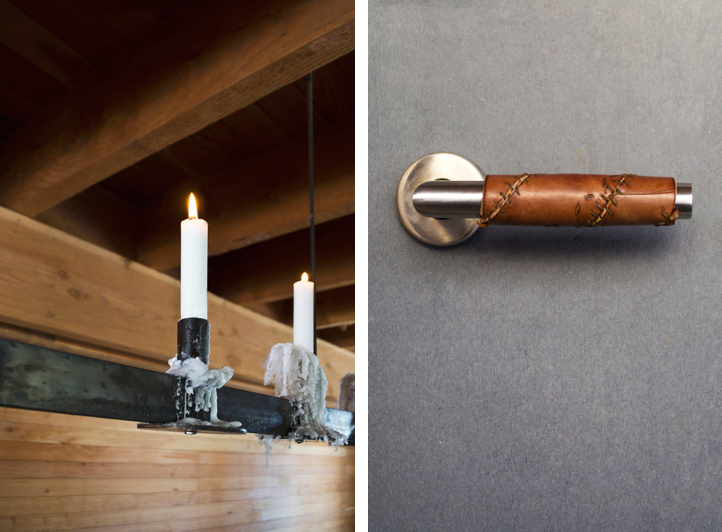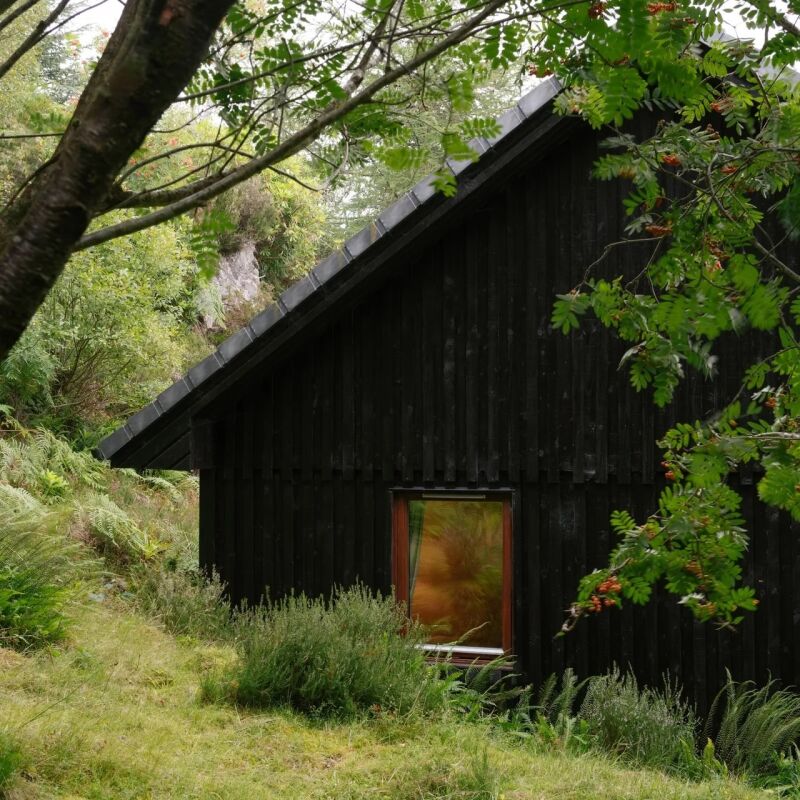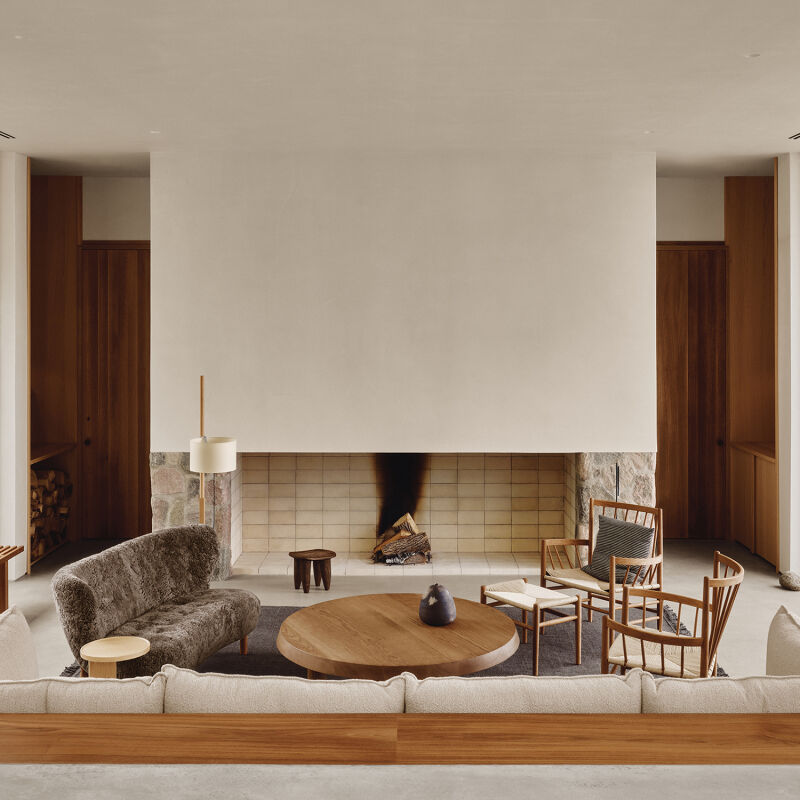When snowboarders Susan Scott and David Scott of Scott & Scott Architects set out to build themselves an off-the-grid alpine cabin, they let the free spirit of their sport be their design guide. Located on the north end of Vancouver Island, the structure is located in an area renowned for its powder. Determined to tread lightly in the woods, Scott & Scott created a building that required minimal machine excavation: it withstands heavy snowfall by rising above it on tree-trunk columns. The couple say their design/build process was an adventure “not bound heavily in pre-determination.” The results? A stylish snowboarder’s idyll that is as light on its feet as it is on the environment.
Photography courtesy of Scott & Scott Architects via ArchDaily.

Above: The two-story cabin is located in an alpine recreation area that is 4,200 feet above sea level with a heavy annual snowfall. In order to elevate the structure above the height of the snow, the architects used six columns of Douglas fir tree trunks that they exposed inside the cabin. A window wall creates a snow globe effect in the living room.

Above: The minimalist interior is clad in planed fir.

Above: The cabin is 1,000 square feet and off the grid: it’s heated by a wood-burning stove and lit by candles; water is collected and brought in from a local source. In the living room, wood is stowed in shelves and the built-in bench has cushions upholstered with vintage Swiss Army blankets.

Above L: Candles set in blackened steel that runs the length of the living room provide lighting at night. Above R: Leather-covered door handles are warmer to the touch than bare metal handles.

Above: A Hudson’s Bay blanket supplies year-round warmth in one of the two bedrooms. Learn the surprising history of the Hudson’s Bay blanket (and what the narrow black lines stand for) in Megan Wilson’s recent Object Lessons post.

Above: The cabin is accessible by gravel road for only five months of the year. When the snowed-in season supplies are delivered by toboggan.

Above: A corner of the ground floor has been carved out to become a porch for storing firewood and snowboarding equipment.

Above: The cabin was built to withstand not just snow but strong wind. Its cedar-clad exterior has weathered into a silver-gray that matches the surrounding woods.

Above: The sustainable cabin just received an Architizer A+ 2014 award in the Architecture +Self Initiated Projects category.

Above: The plan of the entry level.

Above: The second floor plan.
Another cabin built for and by architects, Slow House: A Serene Cabin in the Woods, has stirred serious cabin envy in Melbourne. For warm-weather inspiration, see 10 Summer Cabins from Members of the Remodelista Architect and Designer Directory. Over on Gardenista, we’re all admiring the The Deck that Looks Like a Lightbox.




Have a Question or Comment About This Post?
Join the conversation (7)